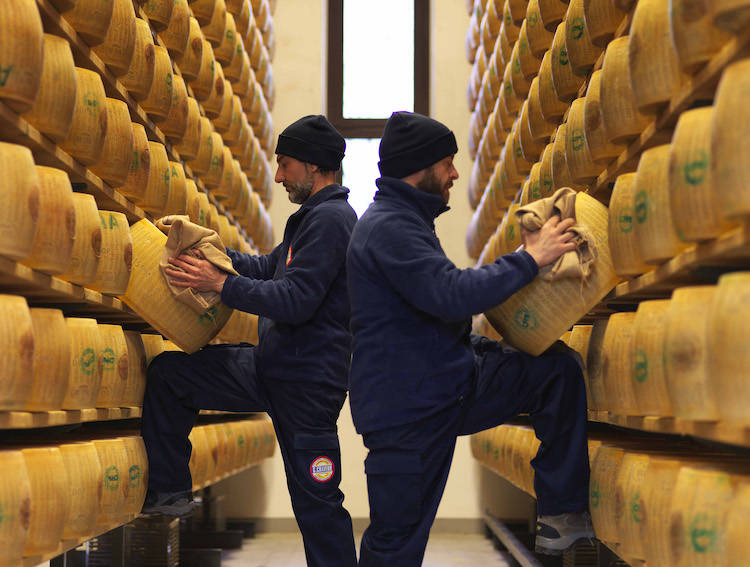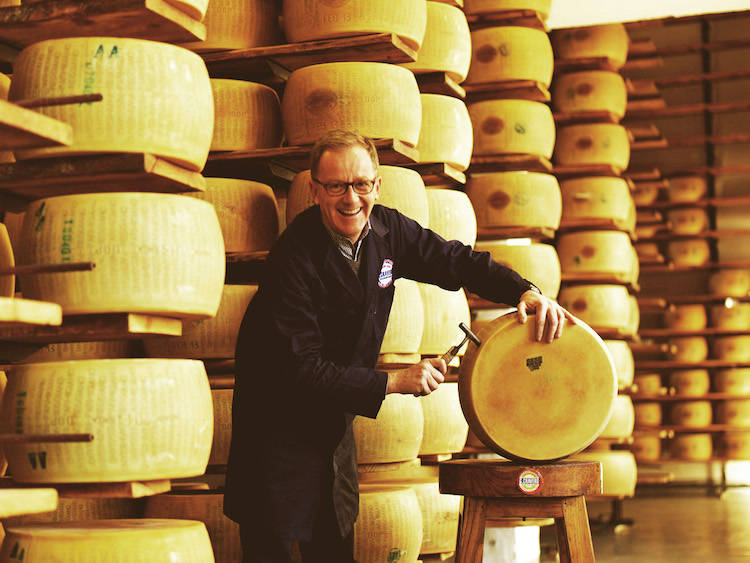Meet Cravero
It seems that nobody knows Parmigiano Reggiano better than Cravero. The family of affineurs (the name given to someone who specializes in aging cheese) began aging cheese in 1855 when Giorgio Cravero founded the business. Since then, the tradition has been handed down from father to son, each generation perfecting and fine-tuning the family’s craft of cheese aging over the years.
Today, Giorgio Cravero (the third Giorgio since 1855) is the keeper of the renowned family business that his great great grandfather established more than 160 years ago. “I was 20 years old when I decided to keep the tradition of the family business going,” says Giorgio. “I felt I probably had it in my soul after two weeks.”
Together with his wife and son, Giorgio continues to look after their cheese with the same passion and care as his ancestors. Although still a small business, the family has customers in more than 20 different countries across the globe.
But wait, isn't all Parmigiano Reggiano the same?
Not quite! Although all Parmigiano Reggiano cheese must follow certain production rules in order to be certified DOP, there are many variables that impact the final result, from the land the cows feed off of to the environment the cheese is aged in. By carefully researching and selecting for each variable, Cravero is able to create the perfect texture and flavor in their Parmigiano Reggiano.
TERROIR
For Cravero, the art of cheese aging doesn’t begin in the maturing room: it starts before when they carefully select the cheesemakers they work with. “This is the crucial point,” explains Giorgio. “Before selecting the cheeses, we select terroir and people.”
The Cravero family works with a select group of small-scale Parmigiano Reggiano producers located in the Tuscan Emilian Apennine mountains. By sourcing wheels from producers located in higher altitudes, where the cows graze on different kinds of grasses, the Cravero’s are guaranteed more moisture in their cheese. In the end, this translates to a creamier, sweeter cheese that you wouldn’t otherwise get if you sourced it elsewhere.
THE AGING ROOMS
The Parmigiano Reggiano wheels arrive at Cravero’s aging facility in Bra when they are 13-months old. At this point, they have already started maturing, but it’s what happens in the following 11 months that makes Cravero’s cheese truly unique.
Their twenty-foot high aging rooms, or “caves,” hold 5,000 wheels of cheese, a capacity that Giorgio says is “tiny” in comparison to other affineurs. In order to maintain the right moisture, Cravero keeps the humidity level at a constant 70% for the entire year.
For a few months during the summer, they use air conditioning to control the temperatures. In the winter, they don’t heat the rooms, a choice that guarantees the aging is more gradual since they don’t want the wheels to “sweat,” causing them to lose fat – and moisture – more quickly.
TURNING THE WHEELS
Unlike other affineurs which may flip their wheels of Parmigiano Reggiano every three to four weeks, Cravero turns their wheels every two weeks. Because of this, the moisture in each wheel is more evenly distributed, creating the right cakey texture.
PASSING THE TEST
How does Cravero know when each wheel is ready? While they age every wheel for a minimum of 24 months, Cravero allows some cheese wheels to age longer depending on how they sound – literally! To test its “doneness,” Giorgio gently strikes each wheel with a small, specialized hammer and listens for the proper tone. “I’m looking to understand if inside the cheese there are some mistakes. Mistakes could be little cracks or holes,” explains Giorgio. “[It] means that the texture and taste could be damaged.”
After a wheel has passed Giorgio's test, it gets stamped with the Cravero logo, packaged up, and shipped around the world.
THE CRAVERO TASTE
So what does Cravero’s cheese taste like?
While we could go on and on about the flavor, here are just a few words that come to mind:
Smooth
Creamy
Lush
Sweet
Buttery
Aromatic
Fruity
Mouthwatering
Because its flavor is so unique, we recommend serving this cheese as is rather than grating atop your dishes. Let it be the star of your cheese board or apertif and pair it alongside a drizzle of floral honey and a glass of prosecco.




































Comments
1
1
1
1